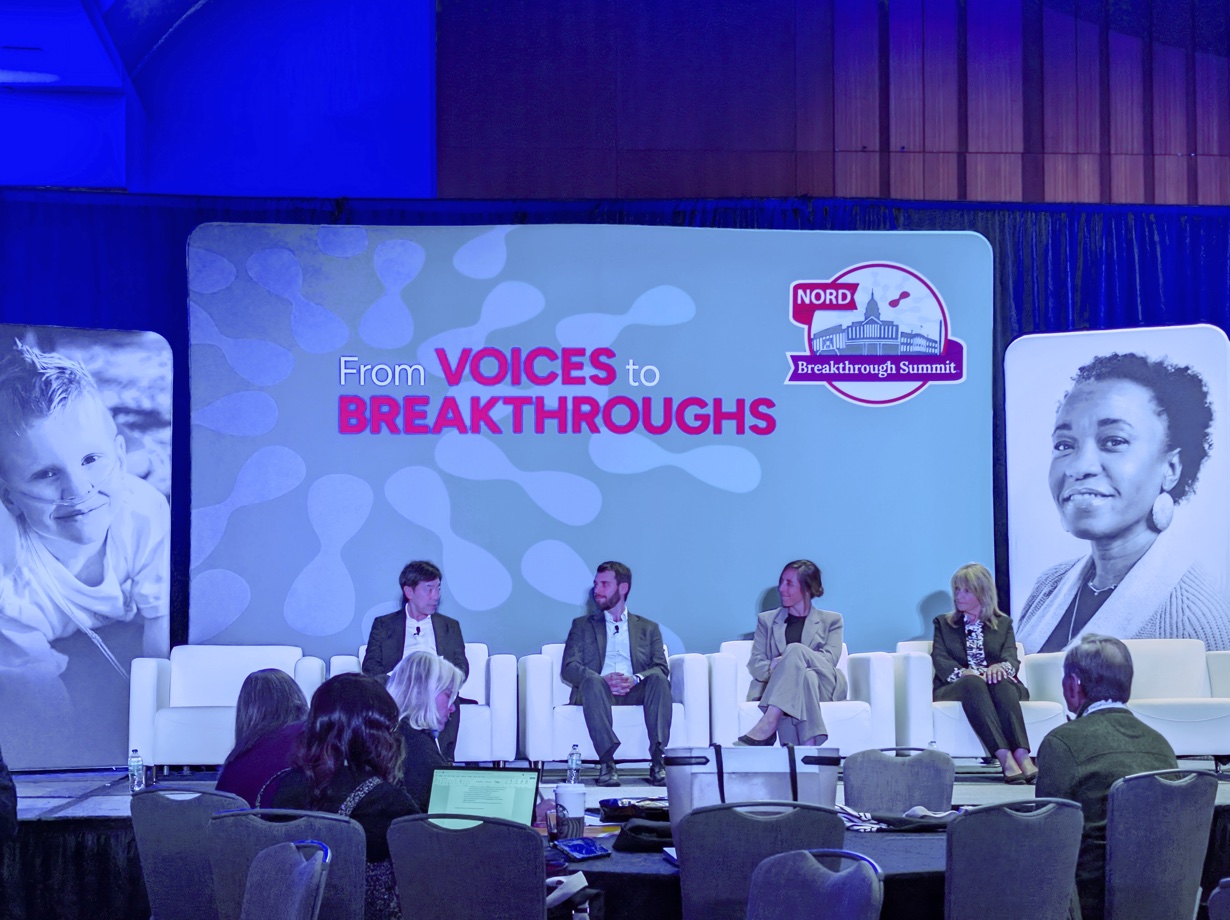In late October, more than 800 patients with rare diseases, advocates, researchers, policymakers, and industry leaders gathered at the NORD Rare Diseases & Orphan Products Breakthrough Summit to address the most pressing issues facing the rare disease community. This year’s theme, “From Voices to Breakthroughs,” captured the spirit of a community that is no longer waiting for someone to listen to their stories but is instead taking the lead and driving change through partnership, advocacy, and research.
Over the course of the three days, we heard compelling research updates, inspiring patient stories, and insightful discussions about the future of rare disease innovation. Several key themes rose above the rest, each pointing to where the community might be headed next:
Patients don’t just deserve a seat at the table — it IS their table.
Since the FDA established the Patient-Focused Drug Development (PFDD) initiative in 2012, drug developers have made significant changes to how they collaborate with the patient and caregiver communities they serve. To that end, patients and caregivers are now recognized as the true experts in their conditions, offering invaluable insights not only when interpreting trial data, but also in determining endpoints, choosing trial sites, and shaping testing and measurement protocols.
The takeaway? Successful partnerships between patients and industry leaders demonstrate that co-created trial designs and awareness campaigns lead to faster enrollment, more robust data, and meaningful regulatory wins.
Storytelling is science’s most powerful tool.
Honest and emotional storytelling, especially from young patients and caregivers, was woven throughout the Summit, not merely window dressing; it was presented as a driving force behind research, regulatory progress, and funding. Stories remind the scientific community that behind every molecule, data point, and clinical trial is a person with a family, a future, and a community of advocates standing beside them.
The takeaway? Scientific progress happens faster and resonates deeper when its humanized.
Technology is reshaping what’s possible in rare disease treatment, but trust and ethics must lead the way.
Across several panels, speakers explored how artificial intelligence is reshaping the path from discovery to clinical development, with the potential to dramatically shorten timelines from target identification to trial initiation. Yet, they also underscored that innovation must advance in tandem with transparency and always keep the patient front and center.
The takeaway? To build and maintain trust, developers must address data quality, bias and privacy with the same rigor applied to clinical design. In the words of one panel speaker, “You’re a better drug developer if you understand the people you’re working for.” Technology can accelerate progress, but ethics and empathy will define its success.
Finding common ground is a paramount to progress.
Advancing rare disease research remains a unifying cause. Speakers from across sectors highlighted the bipartisan support of the reauthorization of the Pediatric Review Voucher program and other rare disease policy priorities. Cross-disciplinary collaboration through regulatory engagement, industry-patient partnerships and advocacy-driven insight sharing is critical to sustaining progress.
The takeaway? As several leaders reminded attendees, a breakthrough isn’t really a breakthrough if patients can’t access it. Innovation and access must evolve together, supported by continued policy reform to remove unnecessary barriers to care.
Young advocates are redefining the future of rare diseases.
One of the standout moments of this conference came during the “Young Voices” keynote panel, during which four teenagers shared their experiences living with rare diseases and called on industry leaders, lawmakers, regulators and the public to truly listen and act. Their message was clear: “Don’t treat us like we’re made of glass.”
The takeaway? These young advocates are not only raising awareness—they are influencing trial design, championing early diagnosis, and even meeting with legislators on Capitol Hill to drive policy change. These young voices are not just the future of the rare disease movement; they are shaping it today.
The core message to attendees of this year’s Summit was clear: collaboration, compassion, and courage are not just values; they are the driving force behind the next generation of breakthroughs in rare disease.
